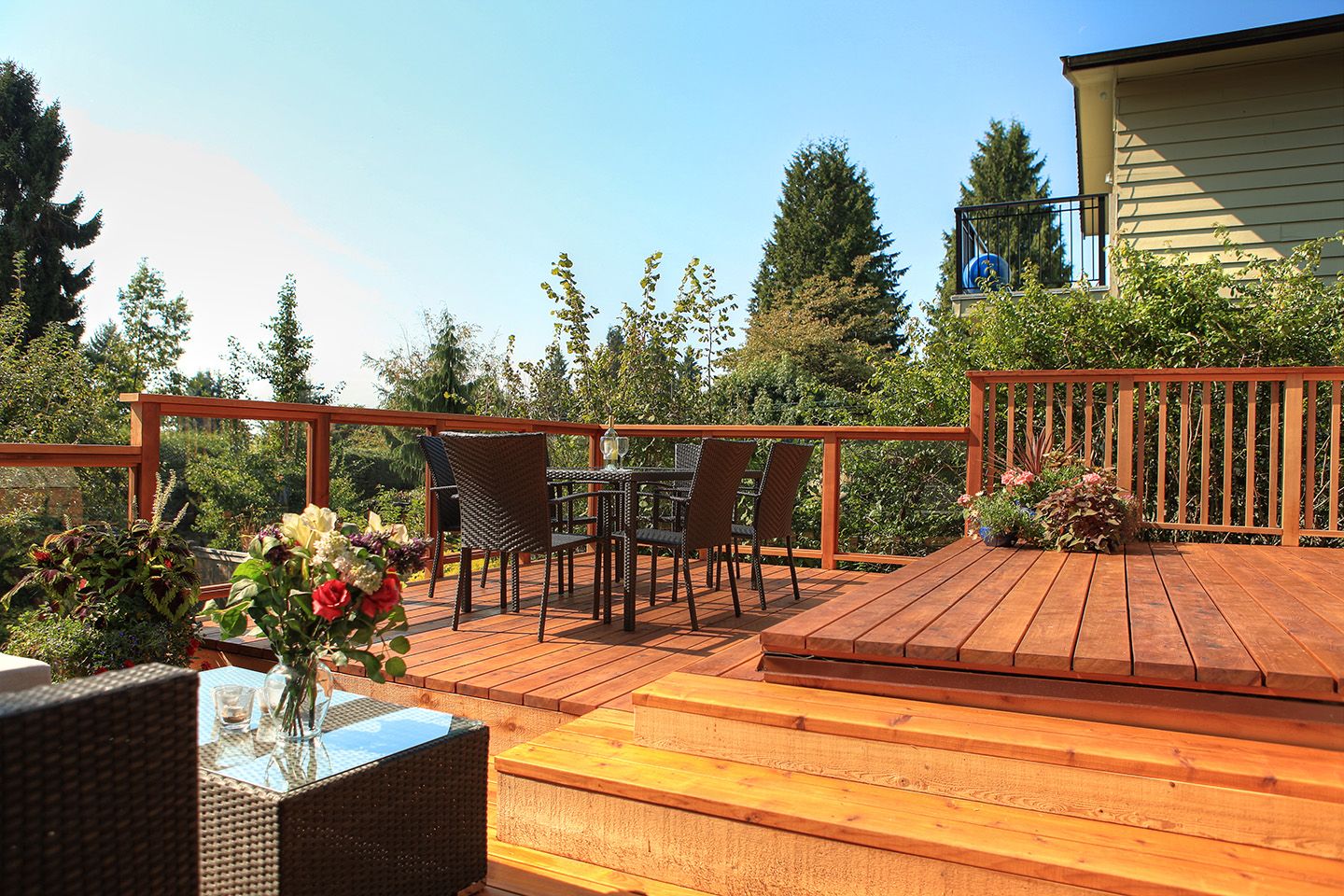Springtime is deck time, as everyone starts thinking about spending more time outdoors. You can design your perfect relaxation and entertainment space using clever seating, innovative lighting, fitting furniture, and consistent theming. Here are a few ideas to help you transform your backyard into a stunning oasis.
Don’t Block the View
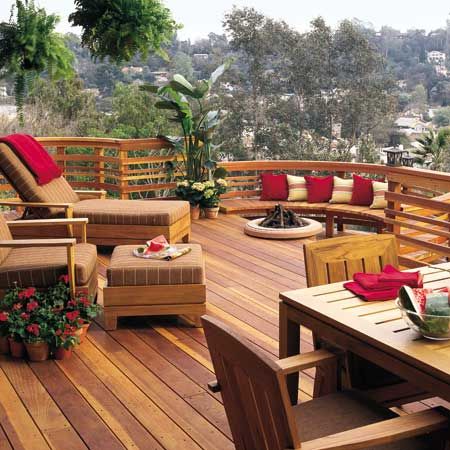
Consider the view that people will see from your deck. Well-designed decks enhance, rather than obstruct, the natural beauty of their surroundings. If you have a modern home, consider using a railing material that fades into the scenery, such as glass or cables. Another clever solution for any design is to play with different levels that each have an unobstructed sightline.
In this example, the designer has created a thoughtful layout with a lower-level curved bench. This both adds seating and moves the rail out of the line of sight for people on the upper level. Step down the deck to keep an open feel while still following safety regulations.
Built-In Planters
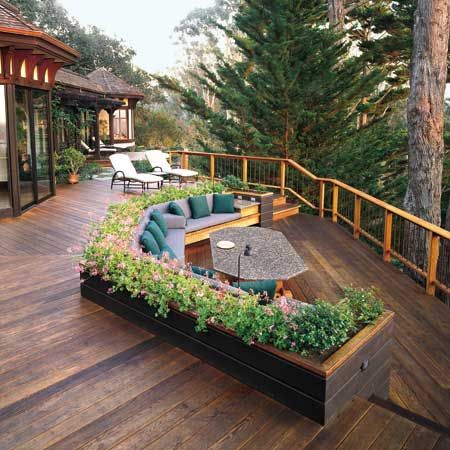
A few built-in planters can add a touch of natural beauty and help you seamlessly transition between your deck and the landscape. One elegant idea is to incorporate them behind lower-level, built-in benches. This hides the back of the bench while adding visual interest and a pop of color. By using weather-resistant materials, the planters and your furniture will be less likely to rot and decay.
As you design your built-in planters, think about what plants you want to include and what systems would keep proper drainage. The design in the photo has holes at the bottom of the planters that drain to the ground below, so plants don’t oversaturate when it’s raining.
Secluded Seating
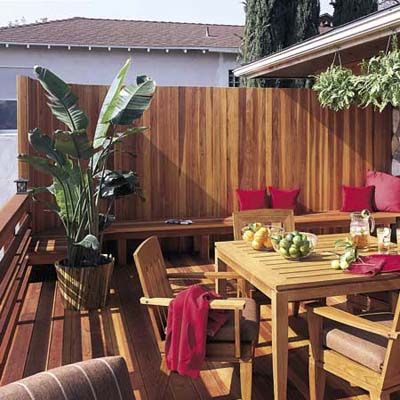
Privacy is a concern for many homeowners, especially in densely populated communities. The deck above is only 10 feet away from neighbors, so the homeowner added an 8-foot high wall made from 1×4 redwood staves. This effectively blocks the neighbors’ view and makes room for built-in seating along the edge.
You can also make natural privacy screens using vertical gardens and living walls, and gain extra privacy and shade with either a pergola, partial roof, or retractable screen. Water features and thick plantings are excellent add-ons to muffle unwanted noise.
Shade From a Pergola
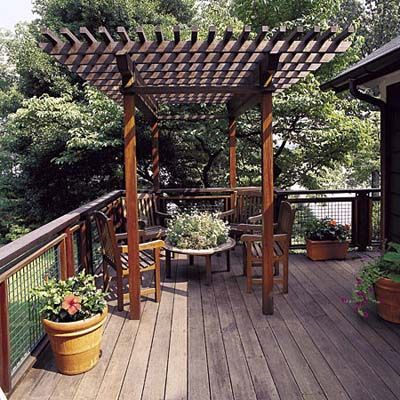
A pergola can be an excellent addition to your deck for both shade and visual appeal. This pergola, built for a deck in Maryland, has perpendicular rafters and purlins, protecting it from the sun while still feeling open and airy. The structure was bolted to the deck framing, and the decking was cut to fit around each post. The railings’ wood frames hold welded wire mesh. The 2-inch mesh, which is powder-coated to prevent rust, doesn’t compromise safety or the view of a nearby river.
To enhance your pergola’s functionality further, you can plant climbing vines or integrate fabric and canvas to give you additional shade over time. Built-in light fixtures can also make them a sight to be seen in the evening.
When you attach a pergola to a deck, be sure it’s properly bolted to the framing for stability and safety. The decking should be carefully cut to fit around each post for a seamless look.
Custom Railings for Unique Layouts
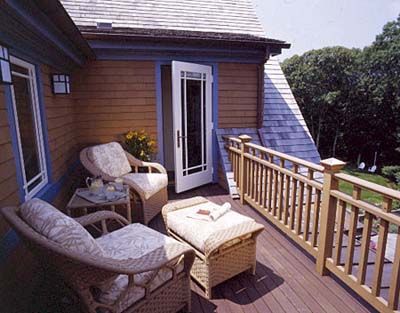
Innovative railing designs can make your deck safer while improving its look. However, there are a few pitfalls you should watch for. In this example, the railing integrates seamlessly with the slope of the wood shingle roof. The photo doesn’t show the exact attachment method, and the location of the railing may increase the risk of a leak.
Double-Duty Table

Multifunctional furniture is a great way to add utility to your deck. This inverted pyramid table conceals a waterproof, low-voltage lighting fixture mounted underneath, which you can turn on for evening gatherings.
You can also consider including built-in storage benches for outdoor cushions and accessories, convertible tables that expand for different uses, modular seating you can reconfigure as needed, and planters with built-in ice buckets.
Railing Details
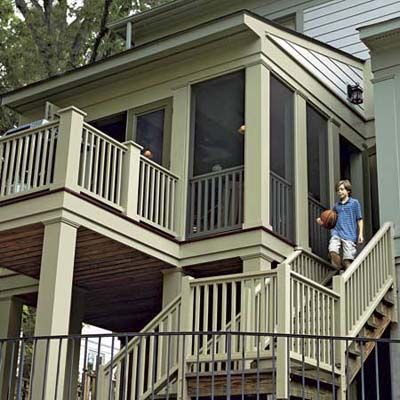
A few decorative elements, like post caps and balusters, can make the rails look more complete. You can also incorporate unique textures and patterns into the railing for a smooth transition.
In this example, the railing behind the porch screens keeps guests from accidentally sending items in the wrong direction.
Contrasting Colors for Stair Safety on a Deck
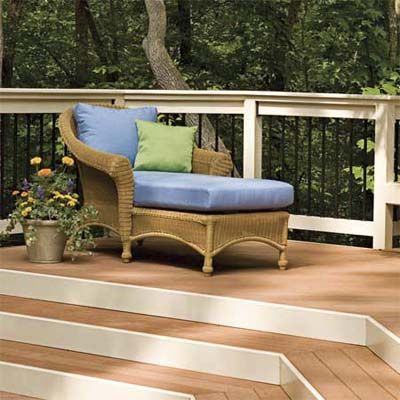
Even with excellent nighttime lighting, outdoor decks tend to be dimly lit for ambiance. Using a lighter-colored decking material for stair risers can prevent trips and falls.
In addition to using colors, you can also install proper lighting onto stairs and pathways for nighttime usage. Use non-slip materials and treatments on stair treads, keep riser height and tread depth consistent, and add handrails on both sides of the stairs for support.
Innovative Lighting Solutions for a Deck
Lighting can extend your deck’s usability well into the evening hours and create a warm, inviting atmosphere. Use a mix of ambient, task, and accent fixtures—but don’t overdo it.
A few ways you can use different lighting styles include LED strip lights on handrails and stair risers, solar-powered cap lights, and hanging lanterns. You can also add motion sensors to keep the lights on only when you need them to be on.
Sustainable Decking Materials
As environmental concerns continue to grow, many homeowners are opting for sustainable decking materials. These eco-friendly options not only reduce your carbon footprint but also offer durability and low maintenance:
- Reclaimed wood for a unique, rustic look with minimal environmental impact
- Composite decking made from recycled plastics and wood fibers
- FSC-certified hardwoods from responsibly managed forests
- Bamboo decking, which is rapidly renewable and highly durable
